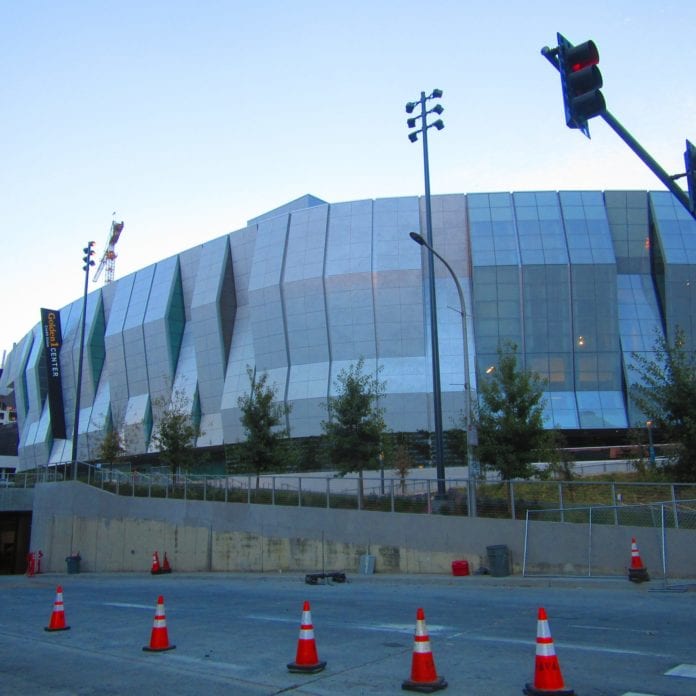While the nature of distributed antenna system (DAS) deployments is changing to incorporate Wi-Fi, small cells, IPTV, internet of things and other systems dependent on connectivity, DAS remains a go-to solution for a wide-range of environments. Let’s take a look at how Liverpool, N.Y.-based JMA Wireless is leveraging its DAS portfolio to address connectivity challenges in a professional basketball stadium, at an outdoor car-racing facility and in a densely populated, mixed-use city center.
Golden 1 Center in Sacramento
Home of the NBA’s Sacramento Kings, Golden 1 Center has capacity for up to 19,000 people and cost more than $500 million to construct. JMA Wireless deployed its TEKO DAS to provide wireless coverage to more than one-million-square-feet. The multi-band, multi-carrier infrastructure supports the 700L, 700H, 850, 800S, 1900 and AWS bands. There are currently 13 sectors, with the ability to expand to 20 sectors supported by 136 low-power radio units. Six radio units are dedicated to public safety communications in the 700 MHz and 800 MHz bands. The indoor/outdoor DAS also provides coverage in the plaza around Golden 1 Center. Some 213 directional and omni-directional antennas support either 2×2 or 1×2 multiple-input, multiple-output (MIMO).
“When we set out to build Golden 1 Center, we wanted to build a seamless experience for fans that took advantage of the best available technology today and was future-proofed for the technology of tomorrow,” Ryan Montoya, Sacramento Kings CTO, said. “The connectivity at Golden 1 Center is simply unparalleled, and that would not be possible without JMA Wireless and DAS.”
Sonoma Raceway in Northern California
The Sonoma Raceway comprises a 2.52-mile race course, a quarter-mile dragstrip, seating areas and about 70 retail locations in an expansive indoor/outdoor complex; the venue hosts events year-round including both NASCAR and IndyCar races among others. JMA again deployed its TEKO DAS in a 15-sector configuration that supports connectivity in the 700 MHz, 1900 MHz and 2100 MHz bands, and is also compatible with AWS-3. There are 76 low-power remote units and four high-power RUs, as well as 88 outdoor antennas that support 2×2 and 1×2 MIMO. The company also used its digital electricity FUZE solution to provide power in hard-to-reach locations, which allowed the project to progress without the involvement of the local electric utility resulting in an accelerated timeline.
“Large outdoor venues, like Sonoma Raceway, bring with them a myriad of mobile communications challenges,” Todd Landry, Corporate Vice President of Product and Market Strategy at JMA, said. “However, our solutions readily overcame PIM (passive intermodulation) and other issues, which degrade the signal and negatively impact wireless performance. During major races our wireless network has supported easily the spectators in attendance.”
Carlsberg City Center in Copenhagen
Near the Copenhagen, Denmark city center, the former Carlsberg brewery has been redeveloped into the Carlsberg City Center, which covers more than 100,000-square-meters that includes housing, commercial properties, retail, restaurants and underground parking for a nearby college. To connect the space, JMA deployed a DAS that supports carriers TDC, 3, Telia and Telenor. The three-sector system is fed by eight high-power RUs and 191 antennas; each RU is connected to a master unit with a single fiber that covers up to five bands.
“We selected JMA Wireless not only because of the availability of local support, but also because of the team’s technical knowledge and expertise,” Michael Hermansen, CEO at KM Telecom, said, adding that the system “could be deployed with minimal disruption while many competitive offerings required that the system be down for weeks during the installation process.”

